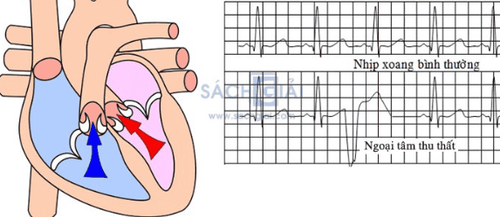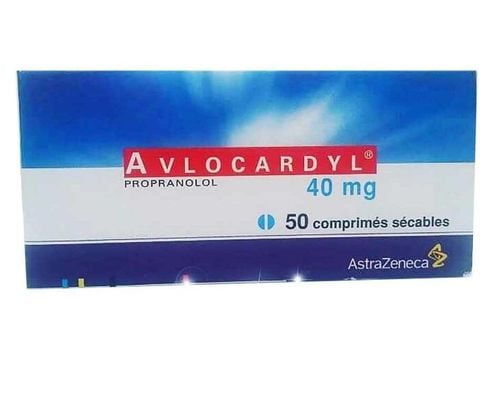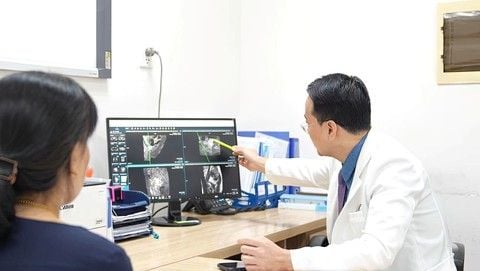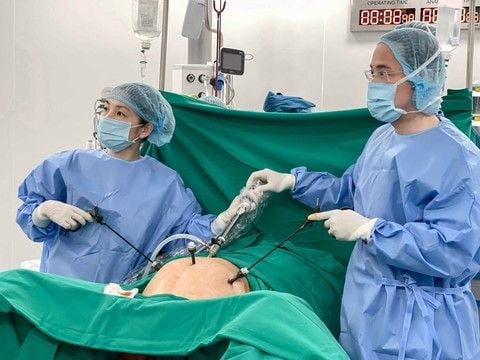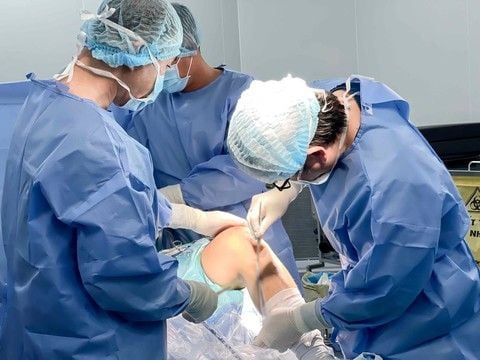Sinus tachycardia is a type of arrhythmia originating from the sinoatrial node in the atria, triggered by either physiological or pathological causes. In most cases, patients do not experience significant symptoms, and their overall health remains largely unaffected. Let’s explore what sinus tachycardia is and whether it can be treated in the article below.
1. What is Sinus Tachycardia?
The sinoatrial (SA) node, also called the sinus node, located in the right atrium, generates electrical impulses that regulate the heart's rhythm during each cardiac cycle. In healthy individuals with normal sinus node function, the heart rate remains steady, typically ranging from 60 to 100 beats per minute (bpm).
Sinus tachycardia, on the other hand, occurs when the sinus node is abnormally stimulated, causing the heart to beat excessively fast. This condition can lead to symptoms such as palpitations, a racing heartbeat, and shortness of breath. It is diagnosed when an electrocardiogram (ECG) shows a sinus rhythm with a heart rate above 100 bpm. While sinus tachycardia may be difficult to cure, it can be effectively managed through a combination of treatment strategies.
2. Causes of Sinus Tachycardia
Sinus tachycardia occurs when the sinoatrial (SA) node is abnormally stimulated due to physiological or pathological factors, including:
• Physical exertion.
• Emotional factors: Anxiety, stress, or excessive excitement.
• Age: Younger individuals tend to have a faster heart rate compared to adults.
• Gender: Women generally exhibit a higher heart rate than men.
• Pregnancy
• Stimulants: Hot weather, alcohol, tea, tobacco, coffee, and similar factors.
• Medications: Use of corticosteroids, asthma medications (bronchodilators), anti-inflammatory drugs, antihypertensive agents, and certain antiarrhythmic drugs.
• Non-cardiac conditions: Fever, infections, anemia, hypovolemia, hyperthyroidism, hypotension, electrolyte imbalances, and disorders of the respiratory, nervous, endocrine, or metabolic systems.
• Cardiac conditions: Heart failure, cardiac tamponade, ischemic heart disease, congenital heart defects, and valvular heart diseases.
3. Symptoms of Sinus Tachycardia
In young and healthy individuals, sinus tachycardia is often asymptomatic because the condition is generally not severe. It is commonly detected incidentally during routine health exams or investigations for other unrelated issues.
In children, respiratory sinus arrhythmia is characterized by changes in heart rate with breathing: the heart rate increases with inhalation and decreases with exhalation.
In older adults, sinus tachycardia tends to present with more prominent symptoms, including:
• Chest pain, palpitations, shortness of breath, and fatigue, which may be early signs of sudden cardiac death.
• Ischemic heart disease or sudden cardiac arrest.
• Abnormally slow or fast heart rates, which can reduce blood flow to organs, leading to symptoms such as memory problems, instability, difficulty speaking, dizziness, or fainting.
Patients should seek medical attention if they experience abnormal, rapid, and recurrent episodes of a racing heart. These could be signs of underlying health problems or other serious conditions.
While most cases of sinus tachycardia are benign, they can sometimes lead to severe complications such as dizziness, chest pain, or even sudden cardiac death.
4. Diagnosis of Sinus Tachycardia
The diagnosis of sinus tachycardia is primarily based on echocardiography and electrocardiography (ECG). Since sinus tachycardia may occur intermittently, it is essential to capture the ECG during an episode. Incorrect timing of the recording could lead to an inaccurate diagnosis. To ensure a precise heart rate assessment, Holter monitoring is commonly used to record the heart rate continuously over a 2 to 48-hour period.
However, the most critical aspect is identifying and treating the underlying cause of sinus tachycardia. Therefore, patients should seek medical attention promptly if they experience symptoms such as frequent palpitations, shortness of breath, chest pain, dizziness, or lightheadedness.
Differential Diagnosis:
• Atrial fibrillation
• Ventricular fibrillation
• Supraventricular tachycardia
• Heart block
5. Can Sinus Tachycardia Be Treated?
The treatment of sinus tachycardia involves identifying the underlying cause to determine the appropriate intervention.
If the sinus tachycardia is not severe, patients may only need to monitor their condition and adopt a healthy lifestyle to manage symptoms. However, it is essential to treat any pre-existing heart conditions.
For sinus tachycardia caused by medications or stimulants: It is important to avoid stimulants, and the physician will evaluate whether to discontinue the medication, adjust the dosage, switch medications, or continue the current treatment.
For sinus tachycardia related to heart conditions or other medical issues: Treating the underlying cause will help stabilize the heart rate.
While sinus tachycardia is generally not an acute, life-threatening condition, patients should not be complacent. They should closely monitor their symptoms and consult a doctor if any abnormalities arise. It is important not to self-medicate with drugs that slow the heart rate.
6. How to Manage Sinus Tachycardia at Home
Managing sinus tachycardia involves not only medication or surgical treatments (such as pacemaker implantation or catheter ablation) but also lifestyle adjustments to reduce both internal and external triggers of sinus tachycardia.
6.1. Follow a Heart-Healthy Diet
A healthy diet plays a crucial role in
stabilizing sinus rhythm and preventing other cardiovascular issues such as coronary artery disease, high blood pressure, and lipid disorders. Foods beneficial for heart health include:
• High-fiber foods: Fiber helps absorb harmful cholesterol, which contributes to arteriosclerosis and an increased heart rate. High-fiber foods include citrus fruits like oranges and lemons, berries, spinach, broccoli, and carrots.
• Omega-3-rich foods: Omega-3 fatty acids help reduce inflammation within the blood vessels and alleviate sinus tachycardia. Eating fish twice a week can provide sufficient omega-3s. Other sources include soybeans, peanuts, walnuts, and almonds.
• Antioxidant-rich foods: Antioxidants help prevent the formation of free radicals, which can contribute to episodes of arrhythmia. These are found in citrus fruits, olive oil, soybeans, dark leafy vegetables, whole grains, and broccoli.
• Electrolyte-rich foods: Foods containing magnesium, potassium, and calcium—such as bananas, spinach, pumpkin, almonds, eggs, and low-fat milk—are essential for stabilizing heart rhythm.
Additionally, it is important to avoid spicy foods, red meats, poultry skin, and caffeinated beverages like tea, coffee, and alcohol, as they can trigger an elevated heart rate.
6.2. Moderate Exercise for Sinus Tachycardia
Individuals with sinus tachycardia are encouraged to maintain a regular exercise routine. Begin with gentle, low-intensity activities and gradually increase the intensity to avoid excessive heart rate elevation.
Start with a 5 to 10-minute walk, gradually extending the duration and intensity over time. Ideally, aim for 30–45 minutes of walking per day, at least five days a week.
Incorporating yoga or Tai Chi into your routine can be especially beneficial. Practicing these exercises consistently for 30–60 minutes daily helps promote overall health and well-being.
However, if symptoms such as palpitations or a rapid heartbeat occur during exercise, it is crucial to stop immediately, sit down, and rest.
To arrange an appointment, please call HOTLINE or make your reservation directly HERE. You may also download the MyVinmec app to schedule appointments faster and manage your reservations more conveniently.
To arrange an appointment, please call HOTLINE or make your reservation directly HERE. You may also download the MyVinmec app to schedule appointments faster and manage your reservations more conveniently.
